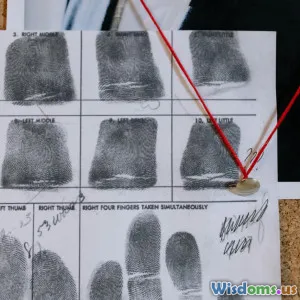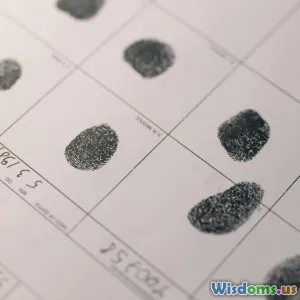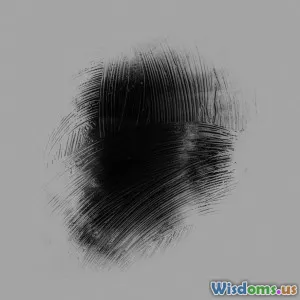
Understanding Modern Crime Scene Techniques
8 min read Explore how cutting-edge technologies revolutionize crime scene investigation, enhancing accuracy and justice. (0 Reviews)
Understanding Modern Crime Scene Techniques
Introduction
Crime scenes have always been more than mere backdrops to forbidden acts; they serve as the silent witnesses holding fragments of truth, waiting for investigators to decrypt their hidden stories. Traditional crime scene investigations, often dramatized in popular media, relied heavily on meticulous observation and manual evidence collection. However, in recent decades, the intersection of criminology and advancing technology has revolutionized these techniques, offering unprecedented precision and depth in crime solving.
This article explores the landscape of modern crime scene techniques, highlighting how novel tools and methodologies enhance accuracy, preserve evidence integrity, and ultimately strengthen the pursuit of justice. From 3D laser scanning to forensic genomics, investigators now operate at the cutting edge, transforming the way criminal investigations are conducted worldwide.
The Evolution of Crime Scene Investigation
Before delving into contemporary approaches, it is essential to appreciate the transformation from classical to modern techniques. In earlier times, crime scene investigators primarily documented scenes using photographs, sketches, and notes. The physical collection of evidence was often done with simple tools and depended heavily on investigator expertise and memory.
Limitations of Past Techniques
- Subjectivity: Manual sketches and reliance on human memory introduced opportunities for error and bias.
- Evidence Contamination: Methods lacked comprehensive protocols to prevent contamination, sometimes compromising key evidence.
- Limited Analysis: Techniques for analyzing evidence, such as fingerprints and fibers, were basic and time-consuming.
The demand for enhanced accuracy led to the integration of technology, forming the backbone of modern criminological analysis.
Core Modern Crime Scene Techniques
3D Laser Scanning and Photogrammetry
One revolutionary advancement is the adoption of 3D laser scanning devices capable of capturing a crime scene’s intricate details with extraordinary precision. These scanners create detailed three-dimensional models by measuring millions of points in an environment, effectively preserving the scene digitally.
- Advantages: Enable virtual walkthroughs from any angle, assist in accurate measurements, and are invaluable in court presentations.
- Example: The use of 3D scanning in the 2012 Aurora theater shooting helped reconstruct the scene accurately during the trial, providing jurors with a clear understanding of bullet trajectories and victim positions.
Similarly, photogrammetry leverages overlapping photographs to build 3D models. When combined, these tools reduce the risk of evidence loss and allow extensive post-scene analysis.
Advanced DNA Analysis
DNA evidence remains a cornerstone of forensic investigation, yet modern methods have expanded beyond mere identification.
- Touch DNA: Forensic scientists can now extract genetic material from minimal skin cells left on objects, broadening the scope of trace evidence.
- Next-Generation Sequencing (NGS): This technology sequences whole genomes rapidly, allowing detailed genetic profiles, including ancestry and physical trait predictions.
- Phenotyping: Predicting physical traits such as hair color, eye color, and skin tone from DNA helps investigators generate leads when no suspect matches are found.
An example includes the identification of the “Golden State Killer” in 2018, where investigators used genetic genealogy databases to track the suspect via distant relatives' DNA profiles.
Digital Forensics and Data Recovery
Cybercrime and digital evidence have surged parallel to technology use in daily life.
- Mobile Device Extraction: Using specialized hardware and software, investigators retrieve deleted or hidden information from smartphones and tablets.
- Data Carving: Techniques recover files from damaged or overwritten media.
- Network Analysis: Tracking IP addresses, online activities, and communications tied to criminal acts enhances case-building.
In notable cases like the Silk Road darknet marketplace takedown, digital forensics unveiled critical evidence about illicit transactions and user identities.
Chemical and Trace Evidence Technologies
Tools such as gas chromatography-mass spectrometry (GC-MS) analyze chemical residues found at crime scenes—explosives, narcotics, accelerants for arson cases, or toxic substances.
- Portable Spectrometers: Allow on-site chemical composition analysis, speeding up investigations.
- Forensic Luminescence: Detects otherwise invisible biological fluids through fluorescence under specific light wavelengths.
These methods optimize evidence detection and preservation and reduce lab processing time.
Integrating Artificial Intelligence and Machine Learning
Artificial intelligence (AI) enhances pattern recognition and predictive analytics in forensic science.
- Automated Fingerprint Identification Systems (AFIS): AI accelerates matching fingerprints against vast databases with remarkable accuracy.
- Facial Recognition Technology: Applied to surveillance footage enhances suspect identification.
- Crime Scene Reconstruction: Machine learning algorithms interpret data to simulate events revealing probable scenarios.
These technologies assist overwhelmed forensic departments and provide objective insights that complement human expertise.
Ethical and Practical Considerations
While technological advances open new frontiers, they also raise ethical questions:
- Privacy Concerns: DNA phenotyping and genetic databases may impinge upon individual privacy and civil liberties.
- Bias and Errors: AI systems must be rigorously tested to prevent algorithmic biases adversely affecting minority groups.
- Training and Costs: Cutting-edge tools require significant investment and specialized training.
Authorities must balance innovation with regulation to foster trust and ensure technologies serve the cause of justice fairly.
Conclusion
Modern crime scene techniques embody the fusion of science and technology with traditional investigative expertise, transforming the field of criminology. The precise documentation through 3D scanning, sophisticated DNA analyses, digital forensics, and AI-driven tools empower investigators to uncover truths that once might have remained hidden.
As technology continues to evolve, so too must the ethical frameworks and operational protocols guiding the use of these methods. The future of crime investigation lies in continually refining these techniques to uphold justice effectively while respecting individual rights.
What remains clear is that the meticulous interplay of technological innovation and human insight fortifies the foundation upon which modern law enforcement operates. These advances not only solve crimes but also enhance societal trust in the justice system, a vital element for any democratic society.
References:
- James, S. H., Kish, P. E., & Sutton, T. P. (2019). Principles of Crime Scene Investigation: Fourth Edition. CRC Press.
- Budowle, B., Schmedes, S. E., & Dziedzic, S. (2018). Next-Generation Sequencing in Forensic DNA Analysis. Forensic Science International: Genetics, 38, 217-226.
- National Institute of Justice (2020). Enhancing the Field of Crime Scene Investigation through Technology.
- CNN Coverage on Golden State Killer case (2018).
- FBI Laboratory Digital Evidence Recovery Statistics (2021).
Rate the Post
User Reviews
Popular Posts

















